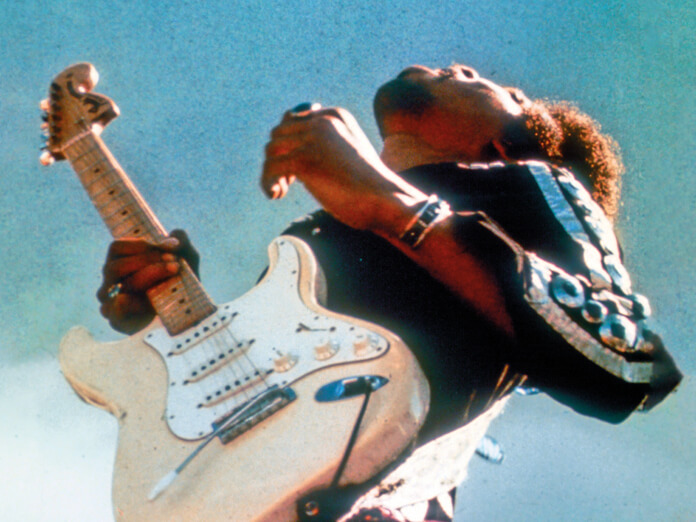The trippy story of how Jimi Hendrix ended up playing a concert in front of a few hundred spectators at a windy cow farm next to a Hawaiian volcano features a cast of characters that could come from a Thomas Pynchon novel. There’s Chuck Wein, aka The Wizard, a Leary-lite Harvard graduate who dated Edie Sedgwick and made films with Warhol before dropping into the hippie world. There’s Michael Jeffery, Hendrix’s manager, a shady operator with a line in tall stories about his career in the British Army. And there’s Hendrix, who found himself committed to making a soundtrack for Wein and Jeffery’s Hawaii-set psychedelic sci-fi movie, Rainbow Bridge, and somehow ended up playing one of the last shows – performing with the Cox-Mitchell axis – on the tiny island of Maui.
Directed by John McDermott, Music, Money, Madness – Jimi Hendrix Experience Live In Maui attempts to unpick this wild tale with the help of a tremendous batch of interviewees. Billy Cox and Eddie Kramer are on hand from camp Hendrix, there’s cast and crew from Rainbow Bridge, a few still bewildered Warner Bros execs plus archive interviews with Mitch Mitchell and Chuck Wein.
Rainbow Bridge started as a celebration of Hawaii’s surfing subculture, but soon mutated into an experimental, unscripted Warhol-esque film inspired by hippie life, Wein’s impenetrable personal philosophy and Jack Nicholson’s stoned campfire monologue from Easy Rider. It’s the success of the latter that seemed to appeal to Jeffery, who thought a Hendrix score would turn a counterculture flick into a serious commercial offering. The promise of that soundtrack persuaded Warners to fund the film, and Hendrix was on board as he needed the money to complete Electric Lady Studio.
Filming was chaotic. “No script, a very loose idea and it shows,” says Colette Harron, who ran an East Village boutique and knew most of the principals. Wein shot 72 hours of footage and delivered a four-hour cut, which was turned into a 90-minute film that bewildered audiences and critics when, after Hendrix’s death, it was eventually released at a pot-fuelled premiere at the Aquarius in Hollywood in 1971.
Hendrix made a cameo in the film as an assassin but his biggest contribution was to perform an outdoor concert that was filmed. The gig was as unconventional as the film. “It was a colour/vibratory sound experience,” says Rainbow Bridge art director Melinda Merryweather. “The electricity went off, people swear they saw a spaceship go by, somebody fell of a tower.” The audience were asked to sit in astrological order and delivered a mass Buddhist chant as Hendrix took the stage. A gale was blowing and the small audience sat on the floor as if they were at a village fête. It must have been one of the most unusual set-ups Hendrix had ever faced but he seemed to thrive in the atmosphere – Cox describesit as one of the best the trio did.
The set included new songs like “Dolly Dagger”, “Hey Baby (New Rising Sun)”, “Ezy Rider” and “Freedom” alongside established classics. Seventeen minutes of scratchy footage – with drums overdubbed by Mitchell – appeared on the posthumous Rainbow Bridge film, eventually released along with a Hendrix LP of the same name that had nothing recorded in Maui. Much more restored footage features in this fun documentary, while the forthcoming Live In Maui triple contains all that was salvageable from the two 50-minute sets.



